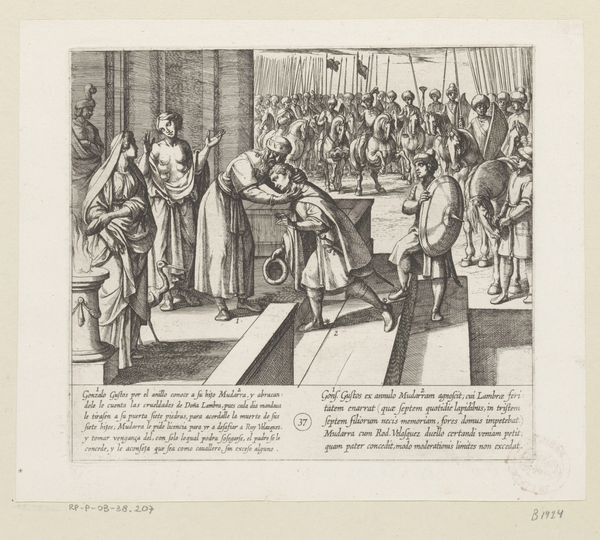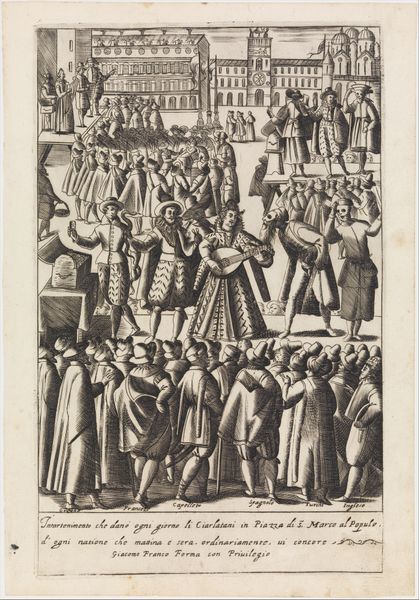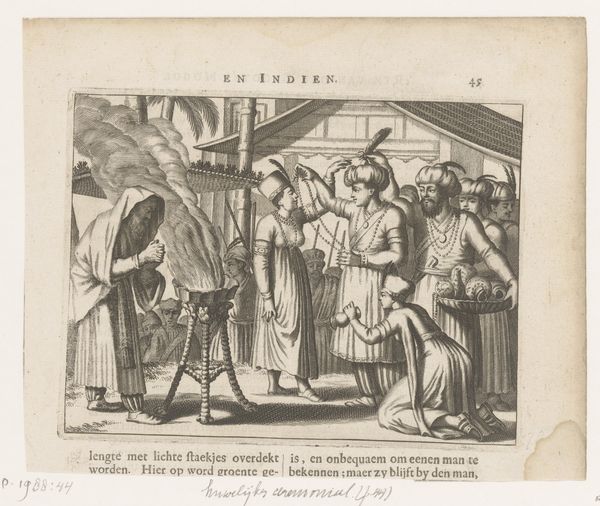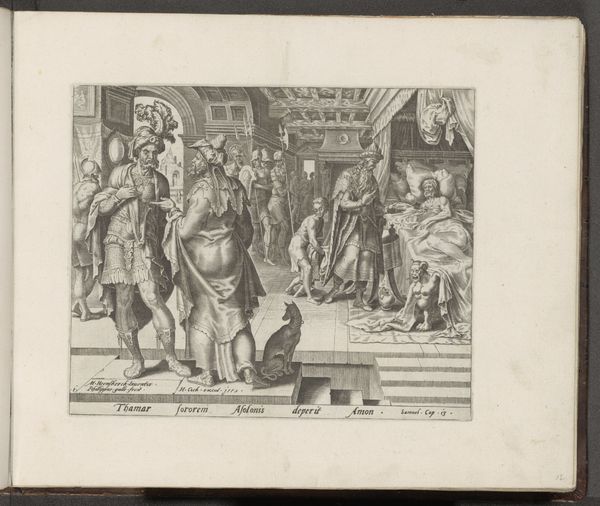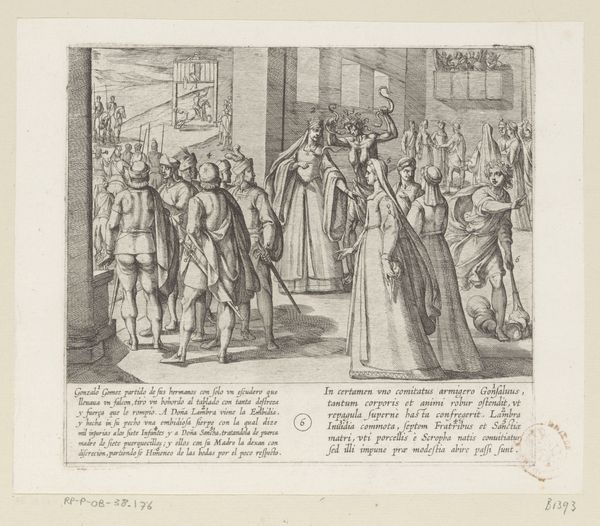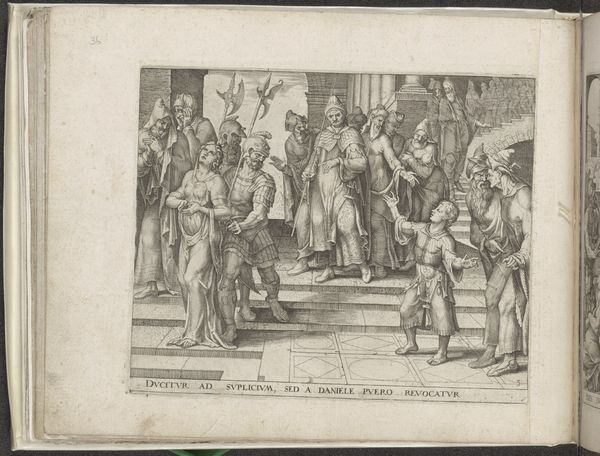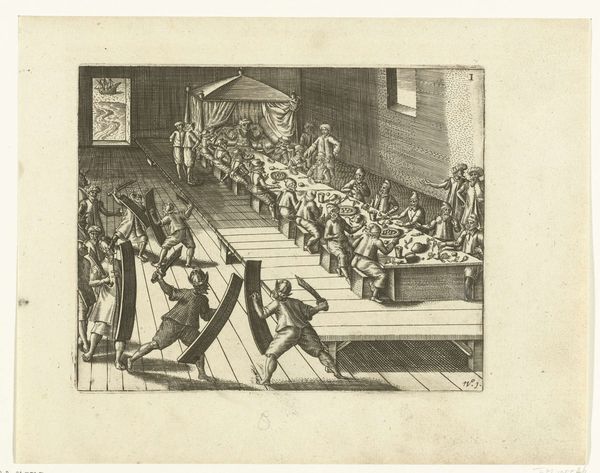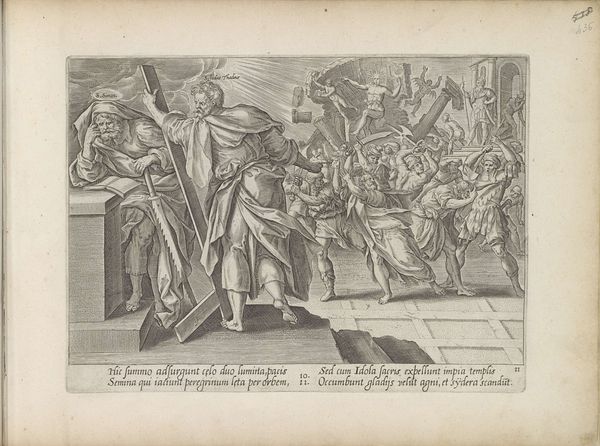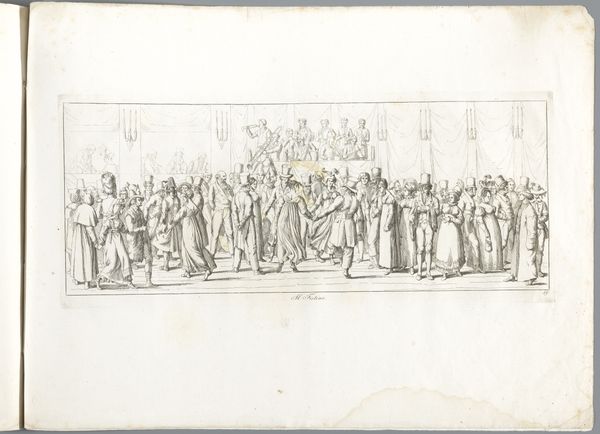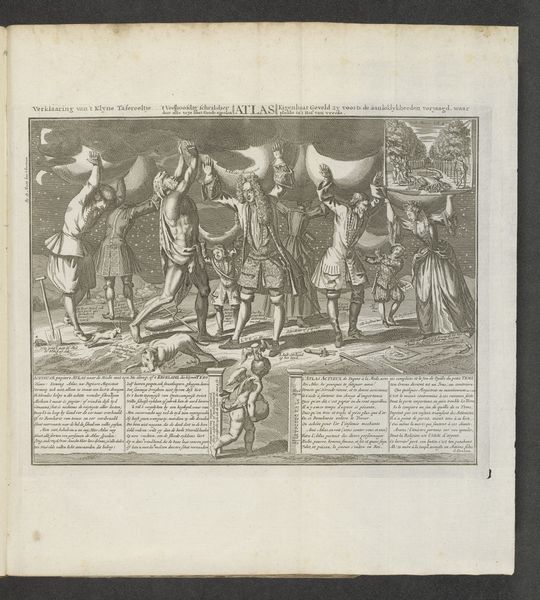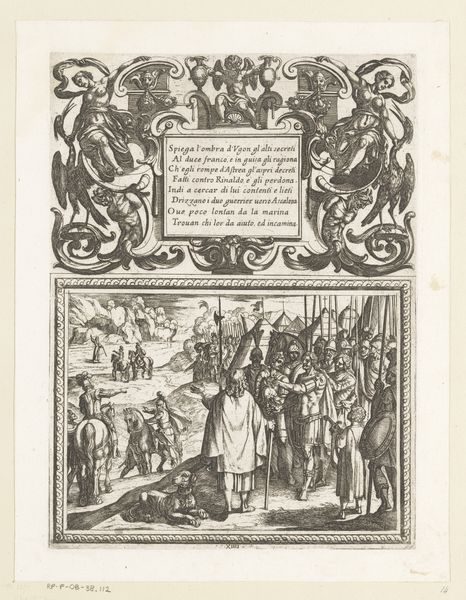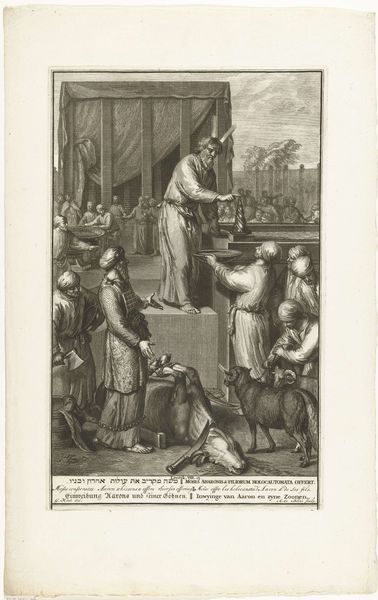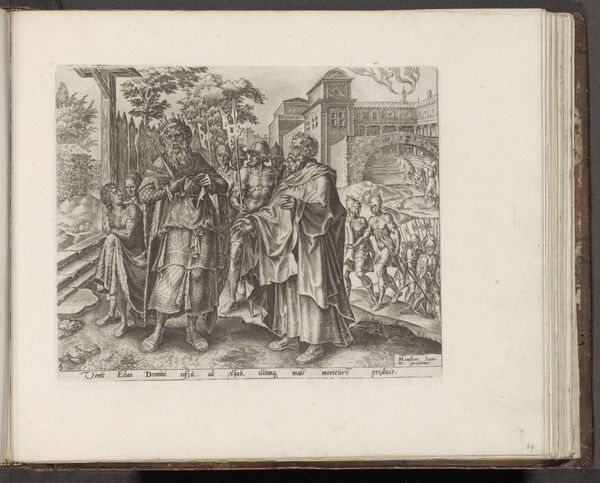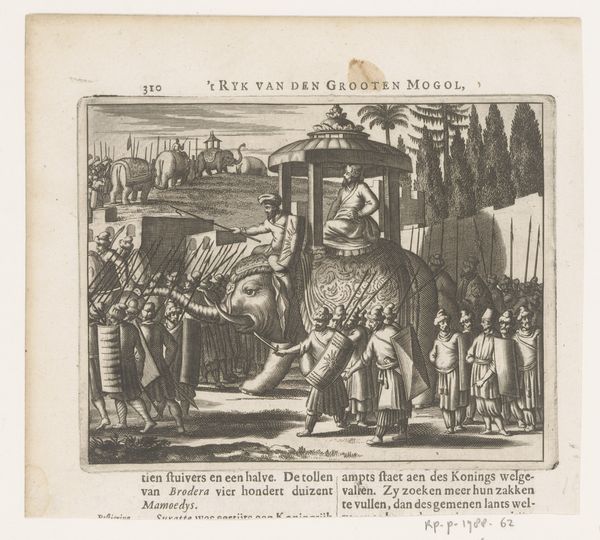
print, engraving
# print
#
asian-art
#
history-painting
#
engraving
Dimensions: height 129 mm, width 159 mm
Copyright: Rijks Museum: Open Domain
Curator: Welcome. We’re standing before “Processie met het beeld van Vishnoe,” or “Procession with the Statue of Vishnu,” an engraving from 1672. Editor: It’s…interesting. Quite detailed for its size. But my initial reaction is a discomfort stemming from the depiction of the subjugated figure in the foreground. Curator: Let's break it down. The image, part of the Rijksmuseum collection, shows a religious procession. Notice the labor involved—the men bearing the weight of the platform and statue. Consider the paper, the ink, the press – the materials themselves facilitate dissemination of this colonial view. Editor: Precisely. It’s important to see this image as more than a neutral depiction. Who commissioned it? What was its intended audience? The power dynamic here is impossible to ignore. Look at the idol perched above. How does this representation feed into European fantasies about the exotic ‘Orient’ and justify colonial intervention? Curator: Absolutely. And how is this image distributed? As a print, it becomes reproducible, influencing perspectives. It serves a social function beyond mere aesthetics. Consider the economic framework: artists dependent on patronage, creating objects for consumption within a market influenced by colonial endeavors. Editor: It raises questions about representation, cultural appropriation, and the exoticizing of Eastern cultures. Who holds the power to represent whom and what are the social consequences of this? It demands a deconstruction of Orientalist tropes. It shows how cultural biases manifest in material production. Curator: It’s easy to see it just as “Asian Art,” but it really becomes a reflection on how the Dutch perceived – and wanted others to perceive – their relationship with other lands, and people in that time. Editor: It does ask us to look deeper and think critically about not only what is shown but, more importantly, the story behind its making and consumption, prompting reflections about power.
Comments
No comments
Be the first to comment and join the conversation on the ultimate creative platform.
